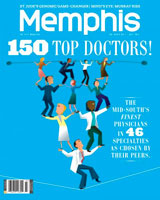The Natural History of Osteoarthritis
The natural history of osteoarthritis (or wear-and-tear arthritis) of the knee was discussed at length. I explained the primary problem is the wearing out of the cushions of the knee joint. These are commonly seen as the rubbery caps on the ends of a chicken bone. Bone is very sensitive to pressure pain, and this cushion is needed to prevent pain with weight bearing. Over time, these wear down, which generally takes a lifetime. However, this may occur faster depending on your family background, past injuries, sports activities, and other factors that put pressure on your knees, such as excessive weight. At some point, this becomes painful with weight bearing activities. The process is slow, but the first symptoms may seem sudden.
This is when medical treatment usually starts. Weight loss (if necessary) and some activity changes may slow the wear process, but it proceeds inexorably like a pothole in a road. With the passage of each car (footsteps), the wear becomes bigger and deeper. Medicines help by relieving pain, but none of them has been shown to slow the process. Tylenol and anti-inflammatory drugs can help with knee arthritis pain (just as they do for a headache) but they cannot heal it. Nutritional treatments such as Glucosamine Sulfate can also relieve pains, but no human studies have shown healing or slowing. Some animal studies have shown some slowing of wear, but no healing. Injections of Cortisone are very potent in reducing local inflammation and thereby pain. If effective, they can be repeated every few months for years. Other injections of "lubricants" are expensive, and not effective in my experience and reviews of research. After all, the problem is with loss of cushion and not lack of fluid. Special braces can be used to unload the pressure, if the wear is localized.
When medical treatment has failed, then surgery is a possibility. Failure of medical treatment is defined as continued symptoms of pain, which limit your activities or ability to enjoy things you used to do, after a reasonable trial of medical treatment. This can be very different for each person. For some, it is finishing the last nine holes in a round of golf, and for others, it is simply being able to walk comfortably into church. Arthroscopic surgery to smooth the joint surface has been shown to be harmful and should not be done. Surgeries to break and realign your bones to change the pressure in the joint have some indications, but are rarely done. Most people have heard of a Total Knee Replacement, which has been done for over thirty-five years. This is a major surgery, which takes the knee completely apart (through a long incision) to dislocate the kneecap. The surfaces are all cut off with a saw, and a major ligament is destroyed. New surfaces are applied with metal and plastic, and the wounds repaired. Typically, patients are in the hospital four to five days, then discharged home or to a nursing facility. Rehabilitation may take three to six months.
While Total Knee Replacement (TKR) works well when the whole knee is worn out, in most patients this is not needed to relieve their pain. This is because there are two weight bearing areas of the knee—one on the outside, and one on the inside. Today, nineteen of twenty patients have only worn one half of the knee, most commonly the inside (medial) part. Common sense suggests that replacing only the worn cushions on the damaged half would be better. This Partial Knee Replacement (PKR) has also been done for thirty-five years; however, they were done with the same large surgery with identical hospital stays and rehabilitation as a total knee. These partial knees had good results, but in the United States most surgeons did not see much advantage, so they were rarely used. Over twelve years ago, Dr. John Repicci approached the same problem differently. He is also a Dentist, and he felt that by using dental techniques he could replace the worn cushions through a small incision of only two to three inches. Thus was born the idea of minimally invasive surgery. Now these same patients had a successful PKR, but since the knee was not disassembled, and those important ligaments were preserved, they had only mild pain and could walk in a few hours. Most patients could go home the day of surgery and could recover so quickly that physical therapy was rarely needed. It should be noted that in Europe, the PKR has been used continually and many improvements have been made in its' design. Given these statistics, in my practice, most (nineteen of twenty) patients will do better with a Partial Knee rather than a Total Knee. I continue to use Total Knee Replacements when needed, as the recommended surgery needs to address the disease, not the other way around.
I will be happy to care for you and to provide medical or surgical treatment according to your needs, and at whatever pace is needed for you to feel confident and comfortable with your care.
For more information or to schedule an evaluation with Dr. Schrader, call Mid-South Orthopedic Associates at 901-465-4300 or 877-710-5633.
Contact Us

Schrader Orthopedics &
Stem Cell Treatment Center
927 Cordova Station Ave
Cordova, TN 38018
Ph: 901-465-4300
New! Stem Cell Therapy
Dr. Lawrence Schrader is a participating team member of the California Stem Cell Treatment Center and Cell Surgery Network.
California Stem Cell Treatment Center
and Cell Surgery Network







